| Weight | 1 lbs |
|---|---|
| Dimensions | 9 × 5 × 2 in |
| host | mouse |
| isotype | IgG |
| clonality | monoclonal |
| concentration | concentrate, predilute |
| applications | IHC |
| reactivity | human |
| available size | 0.1 mL, 0.5 mL, 1 mL concentrated, 7 mL prediluted |
rabbit anti-SATB2 monoclonal antibody (ZR167) 6361
Price range: $160.00 through $528.00
Antibody summary
- Rabbit monoclonal to SATB2
- Suitable for: Immunohistochemistry (formalin-fixed, paraffin-embedded tissues)
- Reacts with: Human
- Isotype:IgG
- Control: Colon or colon cancer
- Visualization: Nuclear
- 0.1, 0.5, 1.0 mL concentrated, 7 mL prediluted
rabbit anti-SATB2 monoclonal antibody ZR167 6361
| target relevance |
|---|
| Protein names DNA-binding protein SATB2 (Special AT-rich sequence-binding protein 2) |
| Gene names SATB2,SATB2 KIAA1034 |
| Protein family CUT homeobox family |
| Mass 82555Da |
| Function FUNCTION: Binds to DNA, at nuclear matrix- or scaffold-associated regions. Thought to recognize the sugar-phosphate structure of double-stranded DNA. Transcription factor controlling nuclear gene expression, by binding to matrix attachment regions (MARs) of DNA and inducing a local chromatin-loop remodeling. Acts as a docking site for several chromatin remodeling enzymes and also by recruiting corepressors (HDACs) or coactivators (HATs) directly to promoters and enhancers. Required for the initiation of the upper-layer neurons (UL1) specific genetic program and for the inactivation of deep-layer neurons (DL) and UL2 specific genes, probably by modulating BCL11B expression. Repressor of Ctip2 and regulatory determinant of corticocortical connections in the developing cerebral cortex. May play an important role in palate formation. Acts as a molecular node in a transcriptional network regulating skeletal development and osteoblast differentiation. {ECO:0000269|PubMed:14701874}. |
| Subellular location SUBCELLULAR LOCATION: Nucleus matrix {ECO:0000255|PROSITE-ProRule:PRU00108, ECO:0000255|PROSITE-ProRule:PRU00374, ECO:0000269|PubMed:14701874}. |
| Tissues TISSUE SPECIFICITY: High expression in adult brain, moderate expression in fetal brain, and weak expression in adult liver, kidney, and spinal cord and in select brain regions, including amygdala, corpus callosum, caudate nucleus, and hippocampus. {ECO:0000269|PubMed:14701874}. |
| Structure SUBUNIT: Interacts with ATF4 and RUNX2; resulting in enhanced DNA binding and transactivation by these transcription factors (By similarity). Interacts with PIAS1. {ECO:0000250, ECO:0000269|PubMed:14701874}. |
| Post-translational modification PTM: Sumoylated by PIAS1. Sumoylation promotes nuclear localization, but represses transcription factor activity. {ECO:0000269|PubMed:14701874}. |
| Involvement in disease DISEASE: Note=Chromosomal aberrations involving SATB2 are found in isolated cleft palate. Translocation t(2;7); translocation t(2;11). {ECO:0000269|PubMed:12915443}.; DISEASE: Cleft palate isolated (CPI) [MIM:119540]: A congenital fissure of the soft and/or hard palate, due to faulty fusion. Isolated cleft palate is not associated with cleft lips. Some patients may manifest other craniofacial dysmorphic features, intellectual disability, and osteoporosis. {ECO:0000269|PubMed:12915443, ECO:0000269|PubMed:17377962}. Note=The disease may be caused by variants affecting the gene represented in this entry.; DISEASE: Note=A chromosomal aberration involving SATB2 is found in a patient with classical features of Toriello-Carey syndrome. Translocation t(2;14)(q33;q22). {ECO:0000269|PubMed:19170718}. |
| Target Relevance information above includes information from UniProt accession: Q9UPW6 |
| The UniProt Consortium |
Data
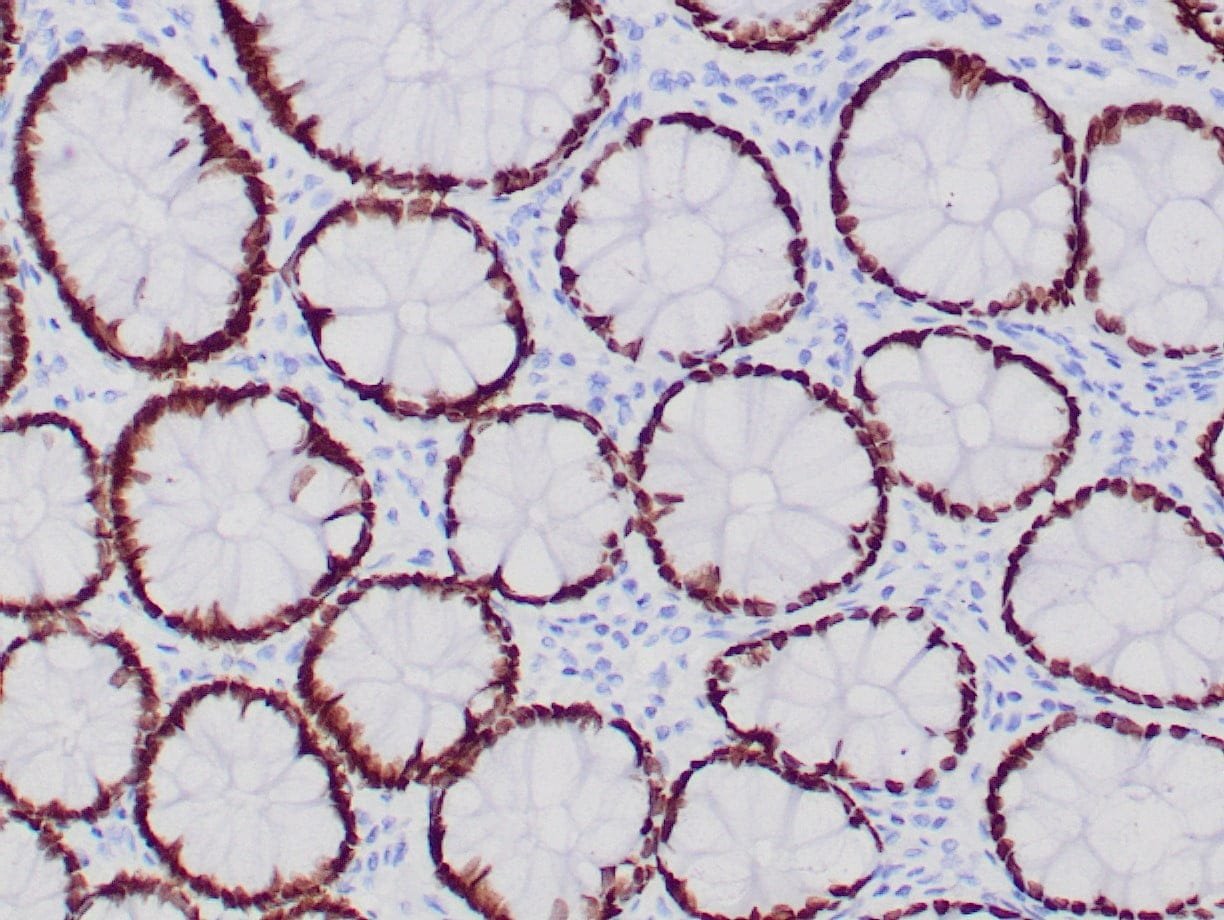 |
| Formalin-fixed, paraffin-embedded human colon stained with anti-SATB2 antibody using peroxidase-conjugate and DAB chromogen. Note nuclear staining of glandular cells |
Publications
| pmid | title | authors | citation |
|---|---|---|---|
| We haven't added any publications to our database yet. | |||
Protocols
| relevant to this product |
|---|
| IHC |
Documents
| # | SDS | Certificate | |
|---|---|---|---|
| Please enter your product and batch number here to retrieve product datasheet, SDS, and QC information. | |||
Only logged in customers who have purchased this product may leave a review.

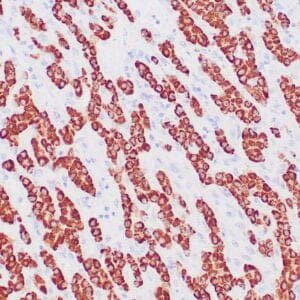

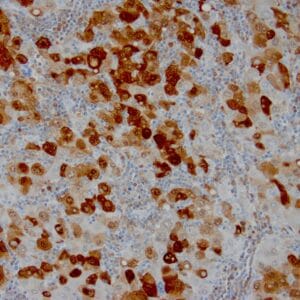
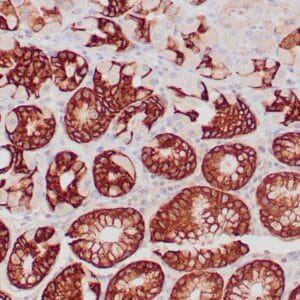

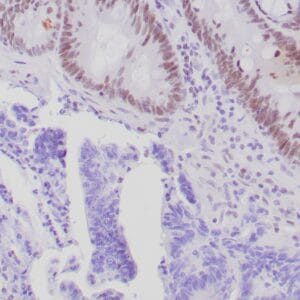

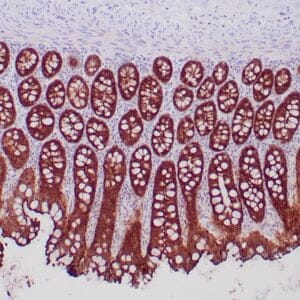
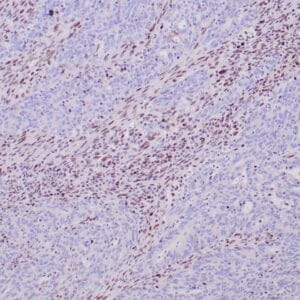
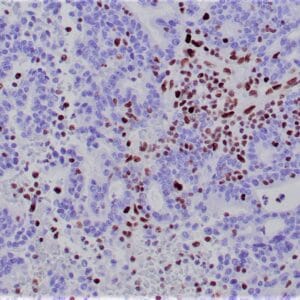
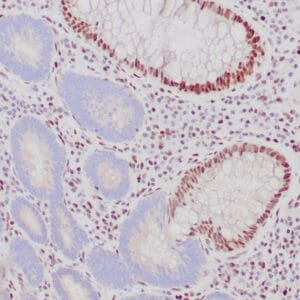
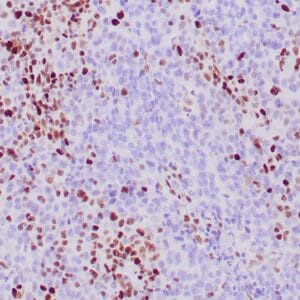

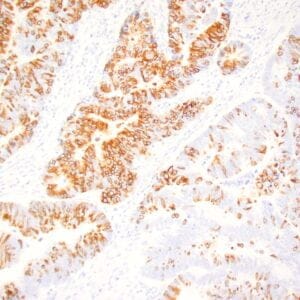
Reviews
There are no reviews yet.